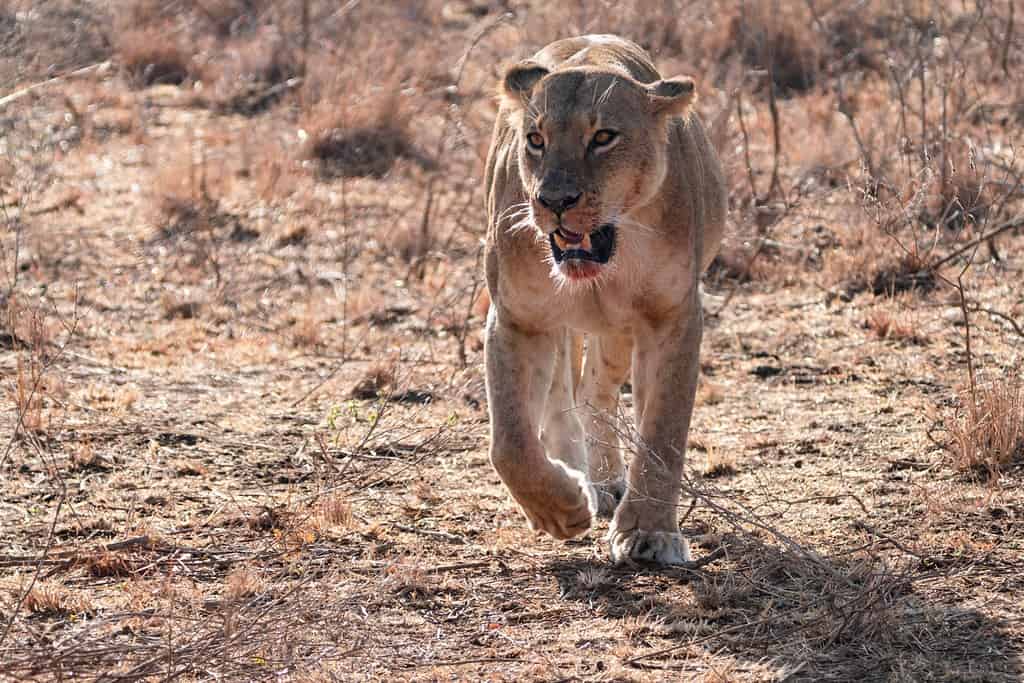The lionesses in this clip give us a masterclass in teamwork. They are working together to try to bring down a large giraffe, which is a challenge for any pride. Some lions drive the giraffe forward whilst another couple waits to block off its escape route. The lead female is waiting to time her attack perfectly – she has a huge responsibility but is also taking a massive risk. As she leaps onto the racing giraffe, she is flicked to the ground where she is trampled and kicked by long legs and sharp hooves. This was not part of the plan!
Watch the Extraordinary Escape Now
What Do Lions Normally Eat?
Lions are large carnivores who need to hunt other animals to survive. They will eat whatever they can catch but often become experts at hunting the prey species that are most abundant in their area. Giraffes are on their list of prey species, along with buffalo, antelope, and warthogs, to name just a few. Lion prides are often dependent on two or three key species in an ecosystem.
In between larger kills, they are happy to target smaller animals. These can include birds, fish, reptiles, and insects. Lions also scavenge – they steal kills from other predators. The clever big cats watch where vultures are gathering to alert them to where a carcass is positioned.
How Do Lions Normally Hunt?

The largest and heaviest lioness leads the hunt.
©melissamn/Shutterstock.com
Every time a lion hunts larger prey, they run the risk of getting severely injured. The pride starts with the stalk sequence, where they try to get as close to the target prey as possible without being detected. You can see the lions approaching with their ears flattened and their eyes fixed on the target. This can go on for half an hour or even longer!
What we see in this clip is the attack sequence and this only starts once the prey is within striking range. It is typical for some of the pride to run ahead of the prey to try to cut it off. Lions can run at around 37 mph for short bursts but prefer it if the attack does not turn into a chase.
Target areas for the attack are generally the rump or, as we see in this clip, the shoulders. The lion clings on whilst attempting to bite the prey – preferably on the neck. Even though there is no clear hierarchy in a lion pride, it is the largest and heaviest female that takes this critical role.
The photo featured at the top of this post is © Zaruba Ondrej/Shutterstock.com
Thank you for reading! Have some feedback for us? Contact the AZ Animals editorial team.






